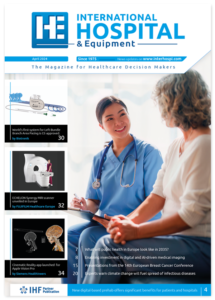New method of diagnosing deadly fungal lung infection in leukemia patients discovered
A team of researchers have discovered a new way for early detection of a potentially deadly fungal infection in patients with suppressed immune systems such as those being treated for leukemia or who have had an organ transplant.
A multidisciplinary research group led by Allan Brasier of The University of Texas Medical Branch at Galveston.
Patients receiving leukemia chemotherapy treatments, bone marrow stem cell transplants or lung transplants are some of those at risk for serious infection by the disease-causing Aspergillus fungus, a common mould in the environment that easily becomes airborne. When inhaled, the mould colonizes the respiratory tract. In patients with immune suppression from their chemotherapy treatment, the mould invades into the bloodstream where it spreads and infects several organs including the liver, lungs and brain. People with normal immune systems are able to destroy the inhaled mould without becoming infected.
Despite close monitoring for infection and aggressive anti-fungal therapy in vulnerable people, the fatality rates are as high as 50 to 90 percent depending on a patient’s underlying disease and site of infection. While early diagnosis can improve the patient’s outcome, timely detection of the infection is difficult.
Currently, the infection is diagnosed with X-rays and tests that measure levels of fungal molecules that produce an immune reaction in a patient’s blood. These tests are not very accurate and often can lead to a wrong diagnosis.
The study describes how the team studied patients undergoing chemotherapy for leukemia, bone marrow transplants and lung transplants from several of the collaborating institutions and identified, confirmed and evaluated a new method of detecting the infectious mould in patients with leukemia. Similar people with no health conditions participated in the study as a comparison group.
The test results for the mould were different for each group of patients, so future commercial diagnostic tests using this technology should be tailored for different medical conditions commonly linked with this infection.
Brasier, director of UTMB’s Institute for Translational Sciences, said the breakthrough was ‘an example of successful collaboration that brought together experts in several different scientific fields to approach a difficult problem.’ The team’s discovery could translate to refined diagnostics, earlier treatment and improved survival for patients affected by this infection. More studies will be needed to confirm and validate this panel as a diagnostic test in independent patients.
The University of Texas Medical Branch at Galveston http://tinyurl.com/hezj57l

